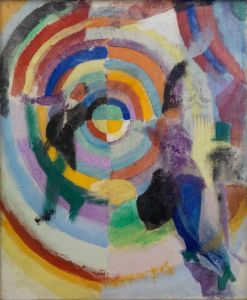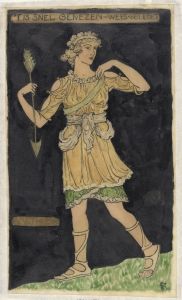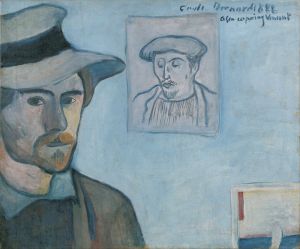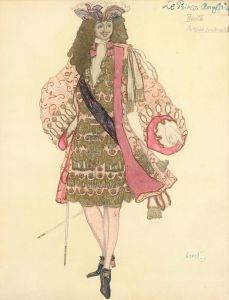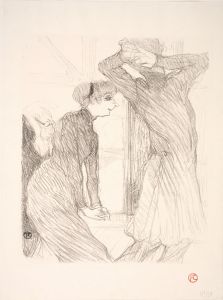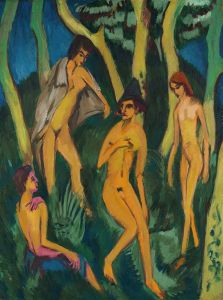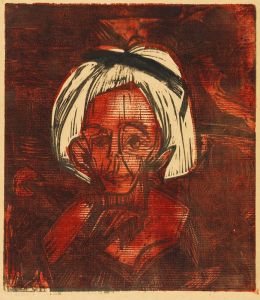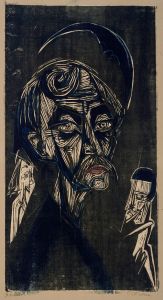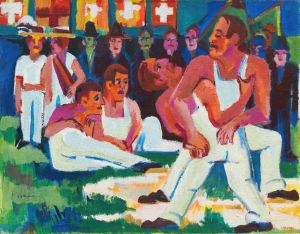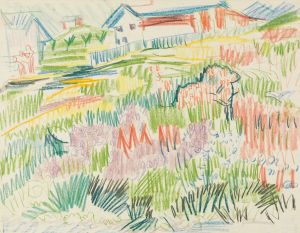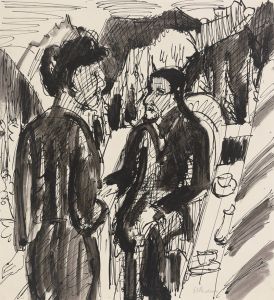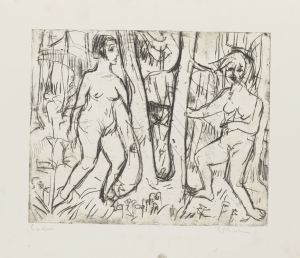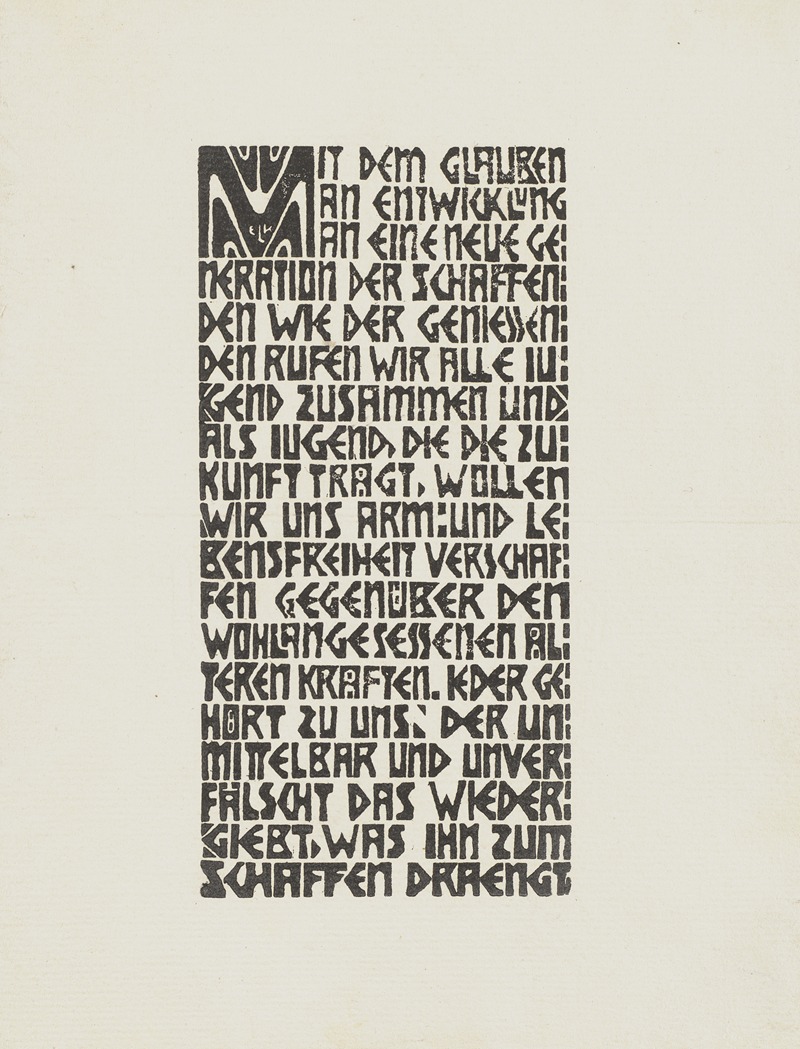
Manifesto of the Brücke artists’ group
A hand-painted replica of Ernst Ludwig Kirchner’s masterpiece Manifesto of the Brücke artists’ group, meticulously crafted by professional artists to capture the true essence of the original. Each piece is created with museum-quality canvas and rare mineral pigments, carefully painted by experienced artists with delicate brushstrokes and rich, layered colors to perfectly recreate the texture of the original artwork. Unlike machine-printed reproductions, this hand-painted version brings the painting to life, infused with the artist’s emotions and skill in every stroke. Whether for personal collection or home decoration, it instantly elevates the artistic atmosphere of any space.
The "Manifesto of the Brücke Artists’ Group" is a woodcut created by Ernst Ludwig Kirchner in 1906. This work is closely associated with the German Expressionist movement and the founding of the artist collective known as Die Brücke (The Bridge). Kirchner, along with other founding members such as Fritz Bleyl, Erich Heckel, and Karl Schmidt-Rottluff, established Die Brücke in Dresden in 1905. The group sought to break away from traditional academic art and embrace a more expressive, raw, and modern approach to creativity.
The manifesto, which Kirchner designed and carved into wood, served as a declaration of the group's artistic philosophy and goals. It emphasized the importance of freedom in artistic expression and a rejection of established conventions. The text of the manifesto, written in a bold and direct style, called for young artists to join the group in creating art that was unmediated, authentic, and reflective of modern life. The manifesto also highlighted the group's desire to build a "bridge" between the past and the future, as well as between different artistic disciplines.
The woodcut itself is notable for its bold, angular lines and stark contrasts, which are characteristic of Kirchner's style and the broader Expressionist aesthetic. The use of the woodcut medium reflects the group's interest in traditional printmaking techniques, which they adapted to suit their modernist vision. The manifesto was distributed as a printed leaflet, making it both a work of art and a functional document for promoting the group's ideals.
Die Brücke played a significant role in the development of Expressionism in the early 20th century, influencing both visual art and broader cultural movements. The group dissolved in 1913, but its members, including Kirchner, continued to have a profound impact on modern art. The "Manifesto of the Brücke Artists’ Group" remains an important historical artifact, encapsulating the spirit of innovation and rebellion that defined the group and the Expressionist movement as a whole.
This woodcut is now recognized as a key work in the history of modern art, reflecting the radical ideas and collaborative ethos of Die Brücke. It is often studied in the context of early 20th-century avant-garde movements and is considered a significant example of how art can serve as both a visual and textual medium for conveying revolutionary ideas.





